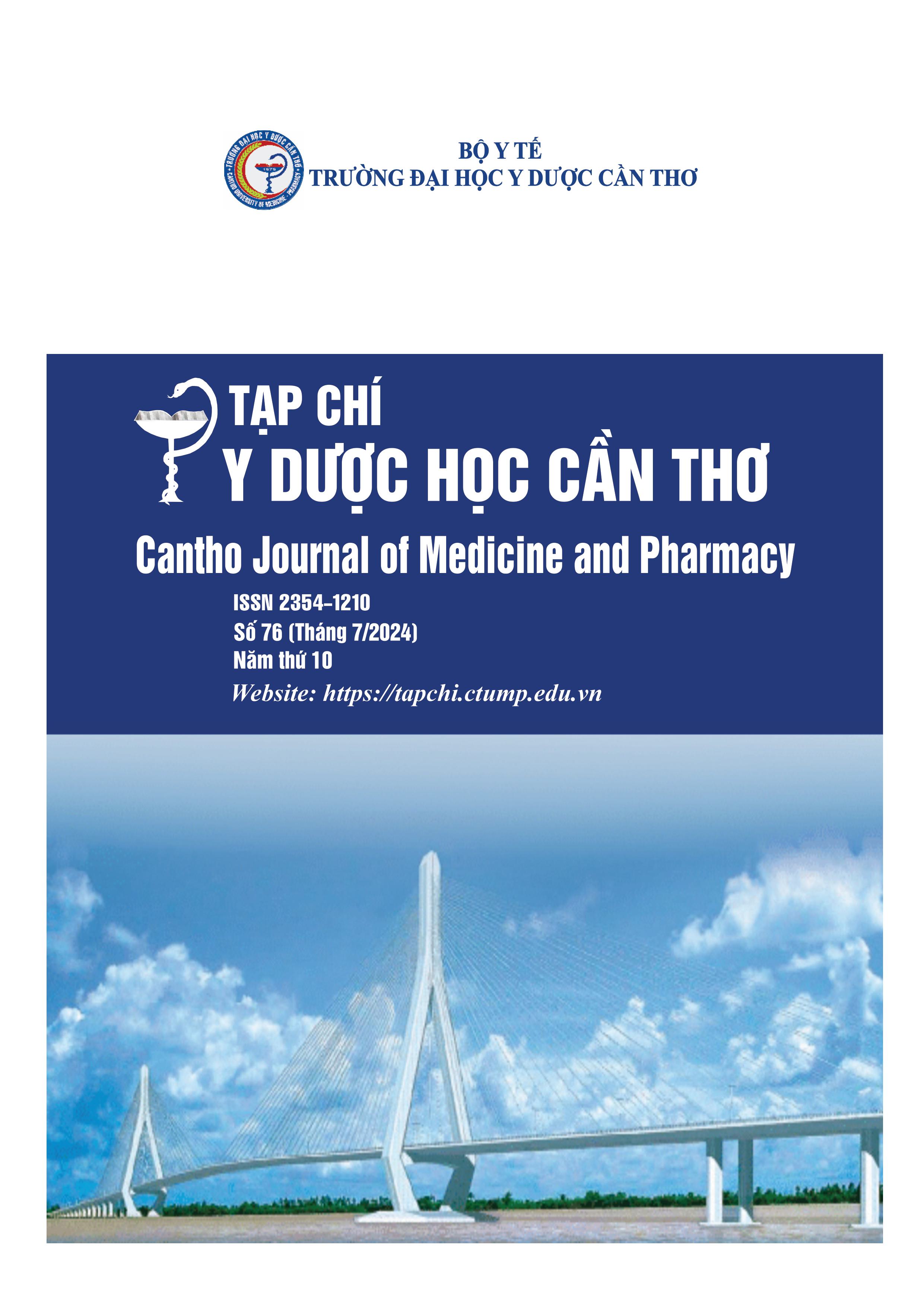STUDYING ON CLINICAL, SUBCLINICAL CHARACTERISTICS AND EVALUATING THE RESULTS OF ENDOVASCULAR INTERVENTION FOR EPISTAXIS AT CAN THO CENTRAL GENERAL HOSPITAL AND CAN THO S.I.S INTERNATIONAL GENERAL HOSPITAL IN 2022-2024
Main Article Content
Abstract
Background: Epistaxis is one of the most common emergencies in the Ear, Nose and Throat specialty but 6-10% of cases requiring treatment. Nowadays, endovascular intervention is being widely applied to accurately diagnose the location of bleeding spots, the characteristics of damaged blood vessels, save the patients from a life-threatening condition. Objectives: To describe the clinical, digital subtraction angiography’ s characteristics and evaluate the results of endovascular intervention for epistaxis. Materials and methods: A descriptive cross-sectional study on 30 cases of epistaxis were doing endovascular intervention at Can Tho Central General Hospital and Can Tho S.I.S International General Hospital from June 2022 to June 2024. Results: Men accounted for the majority of 86.7%, the age group 46-60 was the most common (43.3%). Common causes were including hypertension (50%), idiopathic causes (40%). The DSA features revealed the anatomical lesions in detail with hypervascular (80%), arteriorrhage (33.3%), or pseudoaneurysm (3.3%). The success rates of embolization treatment after 1 week and 1 month were 100% and 96.7%, respectively. Conclusions: Epistaxis commonly occured in men, middle-aged. The common causes of epistaxis were hypertension and idiopathic. DSA helped to locate the precise bleeding spots in many cases, the characteristics of damaged blood vessels and achieved a high success rate with 93.3% of cases that were successful in the first endovascular intervention. 100% of patients was successed after 1 week and 96.7% after 1 month.
Article Details
Keywords
Epistaxis, digital subtraction angiography (DSA), embolization
References
2. Wojak J. C. Endovascular treatment of Epistaxis. Seminars in Interventional Radiology. 2020. 37(2), 150-156. DOI: 10.1055/s-0040-1709156.
3. Tunkel D. E., Anne S., Payne S. C., Ishman S.L., Rosenfeld R.M., et al. Clinical Practice Guideline: Nosebleed (Epistaxis). Otolaryngol Head Neck Sur. 2020. 162(1), 1-38. DOI: 10.1177/0194599819890327.
4. Nguyễn Trọng Minh, Trần Minh Trường, Võ Tấn. Chẩn đoán và góp phần điều trị chảy máu mũi tái phát nặng bằng kỹ thuật chụp mạch số hóa xóa nền. Đại học Y Dược Thành Phố Hồ Chí Minh. 2009. 14-16.
5. Lê Danh Ngọc, Trần Minh Trường. Khảo sát đặc điểm lâm sàng, cận lâm sàng chảy máu mũi nặng và đánh giá điều trị can thiệp nội mạch tại khoa tai mũi họng bệnh viện chợ rẫy qua 32 trường hợp. Tạp chí Y học TP. Hồ Chí Minh. 2018. 22(1), 129-133.
6. Thân Thế Dũng, Thân Văn Thương. Đặc điểm lâm sàng và kết quả điều trị 109 bệnh nhân chảy máu mũi tại bệnh viện Quân Y 110 từ tháng 01/2021 đến tháng 12/2022. Tạp chí Y Học Quân
sự. 2023. 366(3), DOI: https://doi.org/10.59459/1859-1655/JMM.308.
7. Naamani K. El, Morse C., Ghanem M., Barbera J., Amllay A., et al. Endovascular Embolization for Epistaxis: A single center Experience and Meta-Analysis. Journal of Clinical Medicine. 2023. 12(22), 6958-6995, DOI: 10.3390/jcm12226958.
8. Sorour A., Schwager K., Hofmann E. Endovascular intervention in treatment of refractory epistaxis. Stage open Medicine. 2023. 11(4), DOI: 10.1177/20503121231170478.
9. Nguyễn Quốc Dũng, Trần Phương Nam, Lê Chí Thông, Phan Ngô Huy, Nguyễn Ngọc Hưng. Nghiên cứu một số đặc điểm lâm sàng và xử trí chảy máu mũi tại Khoa Tai Mũi Họng-Bệnh viện Trung ương Huế. Tạp chí Y Dược học. 2015. 24(2), 66-69, DOI: 10.34071/jmp.2014.6.9.
10. Chiriac A., Baldof J., Dobrin N., Poeata I. Embolic materials for cerebral endovascular therapy. Romanian Neurosurgery. 2010. 17(2), 171-181, DOI: https://journals.lapub.co.uk/index.php/roneurosurgery/article/view/457.


